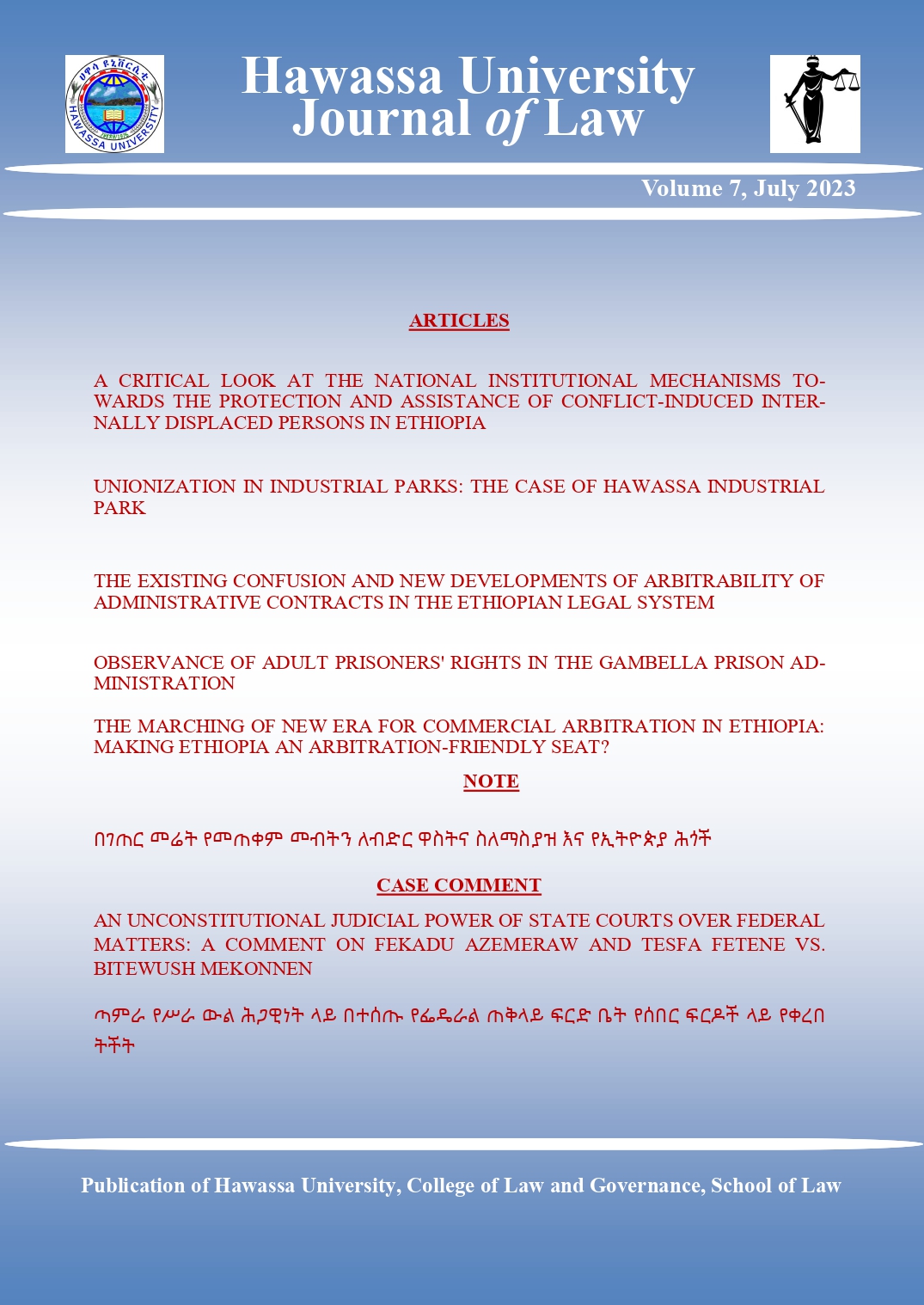A Critical Look at the National Institutional Mechanisms towards the Protection and Assistance of Conflict-Induced Internally Displaced Persons in Ethiopia
DOI:
https://doi.org/10.20372/zrvb2d73Keywords:
Keywords: Ethiopia, IDPs, Kampala Convention, Institutional Frameworks, Human Rights ProtectionAbstract
Abstract
Internal displacement is one of the forced migration types that is increasing in an alarming rate which lacks global attention. The issue was an international agenda in the early 1990s, yet, there is no wellestablished international organization responsible to assist and protect IDPs. It is the state that is primarily taking the responsibilities. The study used qualitative research methodology and examined the institutional responses, gaps and the human rights protection of conflict-induced IDPs in Ethiopia. It has been found that there are scattered institutional structures at the federal and regional levels. The response of the Ethiopian Disaster Risk Management Commission, which is the primarily responsible organ, is reactive and sporadic. There is cluttered coordination and the issue of conflict-induced internal displacement becomes an appeal of rare attention by the three branches of the government. Besides, there is less engagement of CSOs and National Human Rights Institutions. These disparities have challenged the protection and assistance of IDPs in the country. Thus, conflict-induced IDPs become the subject of rare international attention and less national protection. Therefore, it is time for Ethiopia to revise its institutional structure and address the plights of conflict-induced IDPs in the country.

